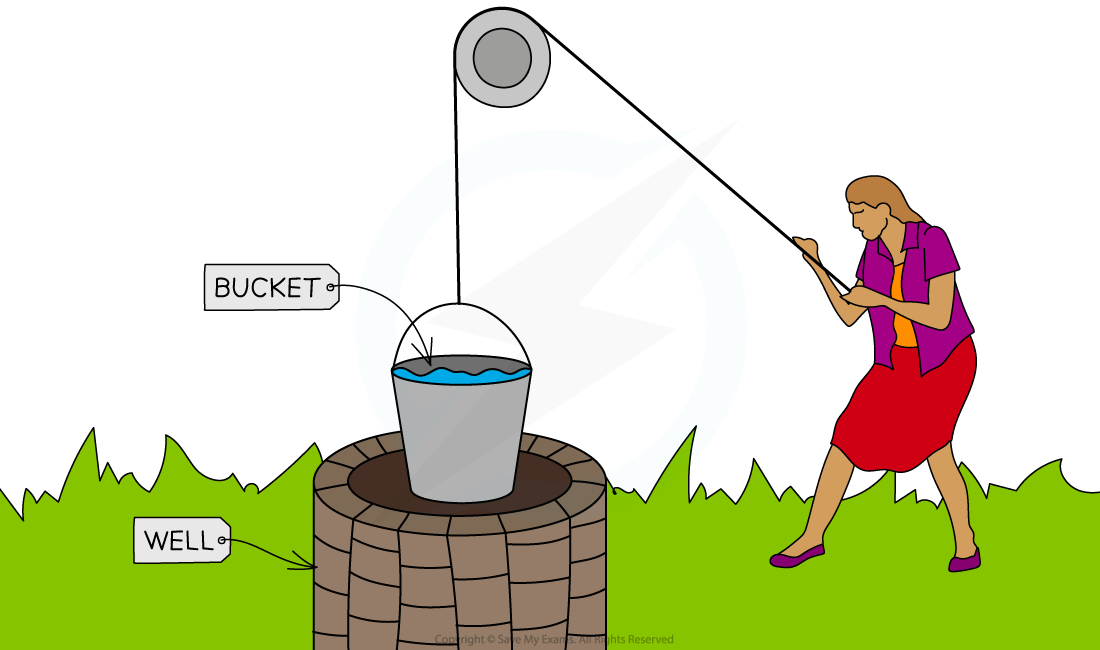Work Done (OCR GCSE Physics A (Gateway)) : Revision Note
Work Done
Work is done when an object is moved over a distance by a force applied in the direction of its displacement
It is said that the force does work on the object
If a force is applied to an object but doesn’t result in any movement, no work is done
When work is done on an object, energy is transferred
The amount of energy transferred (in joules) is equal to the work done (also in joules)
energy transferred (J) = work done (J)

Work is done when a force is used to move an object
Calculating Work Done
The formula for work done is:
Work done = force × distance
Where:
W = work done in joules (J) or newton-metres (N m)
F =force in newtons (N)
s = distance/displacement in metres (m)
You can rearrange this equation with the help of the formula triangle:

Use the formula triangle to help you rearrange the equation
Worked Example
A car moving at speed begins to apply the brakes. The brakes of the car apply a force of 500 N which brings it to a stop after 23 m.

Calculate the work done by the brakes in stopping the car.
Answer:
Step 1: List the known quantities
Distance, s = 23 m
Force, F = 500 N
Step 2: Write out the equation relating work, force and distance
W = F × s
Step 3: Calculate the work done on the car by the brakes
W = 500 × 23
W = 11 500 J
Examples of Work
Work is done on a ball when it is lifted to a height
The energy is transferred mechanically from the ball's kinetic energy store to its gravitational potential energy store

The weight on the ball produced by the gravitational field does work on the ball over a distance
Work is done when a bird flies through the air
The bird must travel against air resistance, therefore energy is transferred from the bird's kinetic store to its thermal store and dissipated to the thermal store of the surroundings

Air resistance (drag) does work against the bird as it flies through the air
Worked Example
A woman draws a bucket up out of a well. The bucket has a mass of 12 kg when filled with water and the well is 15 m deep.

a) Describe the energy transfer involved in raising the bucket out of the well
b) Calculate the energy transferred to the bucket
Answer:
Part (a)
Energy is transferred mechanically (a force is acting over a distance)
from the kinetic store of the woman (as she pulls the rope)
to the gravitational potential store of the bucket (as it is lifted upwards)
Part (b)
Step 1: List all of the known quantities
Mass, m = 12 kg
Gravitational field strength, g = 10 N/kg
Height, h = 15 m
Step 2: Write the equation relating work, force and distance
Step 3: Write out the equation for weight and substitute it into the work equation
Note: This is the equation for gravitational potential energy
Step 4: Calculate the work done on the bucket
The bucket gained 1800 J of gravitational potential energy
Examiner Tips and Tricks
Remember:
Changes in speed are related to kinetic energy
Changes in height are related to gravitational potential energy
Changes in the shape of materials are related to elastic potential energy

You've read 0 of your 5 free revision notes this week
Sign up now. It’s free!
Did this page help you?

